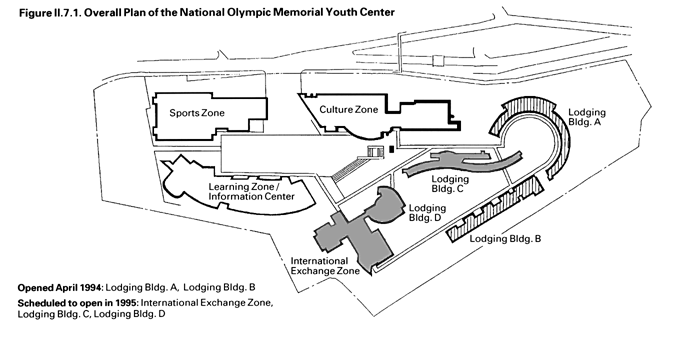| Home > Policy > White Paper, Notice, Announcement > White Paper > JAPANESE GOVERMENT POLICICIES IN EDUCATION, SCIENCE AND CULTURE 1994 > PART II Chapter 7 Section 3 2 | ||
The Ministry of Education, Science and Culture has been implementing the Regional Boys and Girls Circle Activity Promotion Program to encourage community activities for young people on Saturdays, in conjunction with the introduction of the monthly five-day school week. The Ministry has also been conducting research and surveys concerning measures to clean up community environments to ensure that the availability of increased free time on Saturday school holidays does not lead to delinquency. In addition, the local allocation tax is being used to defray the costs of sports and cultural activities organized by schools and citizens' public halls for children whose parents are not at home on Saturdays and for children in special education schools. Meanwhile, national youth education facilities are cooperating with local boards of education and related organizations to implement programs on Saturday school holidays. The programs offered are designed to take advantage of the particular characteristics of individual communities and facilities.
There is concern that today's young people have limited human relationships and lack experience of participation in society. The Youth Exchange Promotion Program was introduced in fiscal 1994 with the aim of providing young people with opportunities to interact with a wide range of people.
The Youth Nature Experience Activity Promotion Program is designed to provide young people with extended experience of "roughing it" in natural environments. In addition to "adventure camps," the program gives priority to the enhancement of environmental education and the development of self-sufficiency in children with disabilities and children with such problems as refusal to attend school and delinquency through the provision of opportunities for experience in a natural environment.
There are various types of youth organization activities, including learning, volunteer activities, sports, and cultural activities. In recent years the range has expanded to include outdoor activities and international exchange.
The Ministry of Education, Science and Culture is promoting and expanding youth organization activities by implementing group-leader training programs at national youth houses, children's nature centers, and other facilities. The Ministry also provides subsidies for leader-training programs offered by prefectural governments, for research conferences sponsored by national youth organizations, and for socially significant activities, such as international exchange.
Youth houses and children's nature centers are being developed as facilities to provide young people with opportunities to experience group life in a natural environment. There are 27 national youth education facilities throughout Japan. As models of public youth education facilities, they play a leading role in the implementation and dissemination of pioneering programs and as centers for youth exchange activities over a wide geographical area. Because of the increased importance that is now being placed on out-of-school activities for youth, the Ministry of Education, Science and Culture has established the Consultative Committee for Research and Surveys Regarding the Roles of National Youth Houses and Children's Nature Centers to carry out comprehensive studies regarding the improvement and expansion of these facilities. The Ministry also provides assistance for the development of public youth education facilities, of which there are 704 (as of 1993).
In addition to these efforts, the National Olympic Memorial Youth Center has been established as a core facility for national and public youth education facilities throughout Japan. In fiscal 1994 the center inaugurated a Science Summer School Program for Lower Secondary School Students in response to concern that young people were drifting away from science and technology. The purpose of this residential program is to enable young people to experience the joys of science by participating in experiments that they would not normally be able to undertake. The functions of the center are being comprehensively and systematically developed with the aim of creating an integrated youth facility for youth exchange and learning activities at the national and international levels in the twenty-first century. The first phase of construction, which consists of a residential wing and an international exchange wing, was completed in fiscal 1994 ( Figure II.7.1 ).

| Back to Top | MEXT HOME |